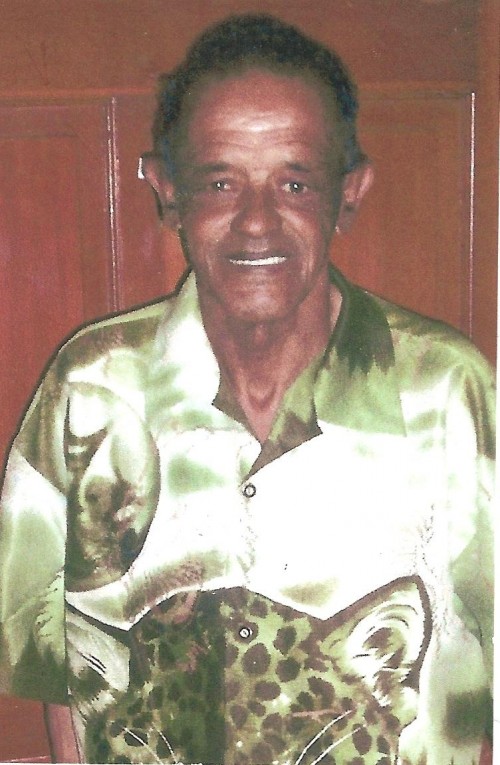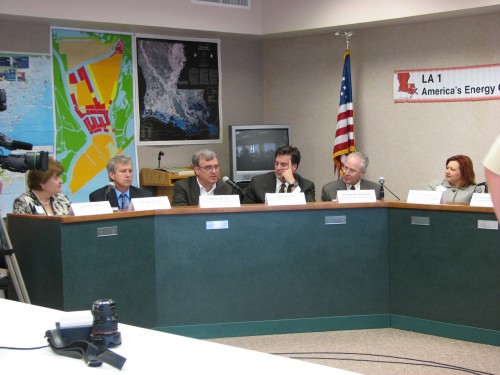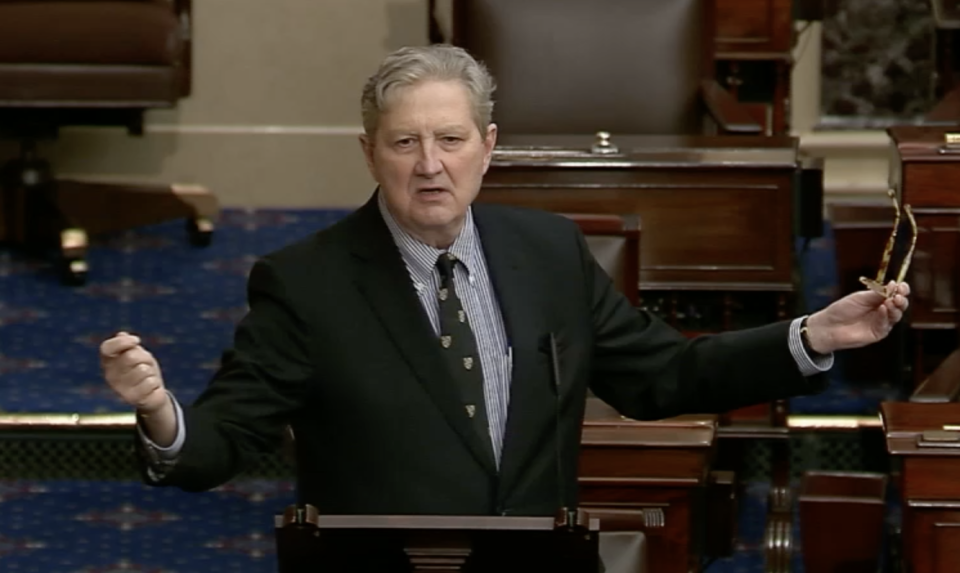William Hetzer, Sr.
June 1, 2007
Gerald Hite, Sr.
June 8, 2007Once again, the national media spotlight was placed on Port Fourchon and south Louisiana Monday as Shell Oil and the La. 1 Coalition hosted a roundtable discussion by Congressional Quarterly, a prominent publication in Washington, D.C. The topic of the discussion was “Energy Challenges and Your Community” and participants included numerous local elected officials as well as a number of state officials with various stakes in the local economy. Several national media outlets were also on hand to provide coverage, including Reuters and Dow Jones New Service n a component of the Wall Street Journal.
Panelists included State Senator Reggie Dupre (D- Bourg), State Representative Loulan Pitre, Jr. (R- Cut Off), Gerald Duszynski of the Louisiana Department of Natural Resources, Frank Glaviano, Vice President of Production for Shell BP America and Ted Falgout, Executive Director of the Greater Lafourche Port Commission.
Prominent in the discussion was the need for a new and elevated Louisiana Highway 1 and the funding mechanism to pay for the recently begun project.
“Most of the future funding for the project will have to come from the federal government because government coffers will reap most of the benefit from a new highway,” said Henri Boulet, director of the LA 1 Coalition.
He noted that current funding for the LA 1 project consists of a 40 percent share from local government (mostly in the form of toll monies to be collected once the highway opens), a 40 percent share from the state and only a 20 percent share from the federal government.
“In 2006, the federal government, through the Minerals Management Service (MMS), collected $7.6 billion in oil and gas royalties from offshore waters, $5.6 billion of which came from offshore Louisiana,” he said. “MMS’s recent five year plan did not address the needs of Louisiana Highway 1.”
Falgout noted that only after “lots of Cajuns making loud noises” about the issue did the highway make it into final future plans provided by the agency.
As an example of how there is no MMS mechanism to address inland impacts from offshore drilling activity, Falgout cited that Port Fourchon has one percent of the population yet consumes over 20 percent of the fresh water the parish water district produces.
“The MMS needs to develop a plan to help mitigate all of these additional costs being borne by local entities in improving the infrastructure due to increased activity,” he said.
Many panelists agreed that if anything good came from hurricanes Katrina and Rita, it was that a greater awareness of the area and the unique role it plays in fueling the nation was brought to the world at large.
“Imagine the residual affects to the national economy from a closed La. 1. No goods and services would be able to get to the port, causing a tremendous rise in fuel prices,” said Lafourche Parish President Charlotte Randolph.
To that point, Shell Oil executive Frank Glaviano noted with an impassable roadway, crews would be unable to reach the port and begin the process of bringing oilfields back online after a hurricane or other natural disaster.
“Port Fourchon and the improvements to La. 1 are critically important to Shell and the many other companies that service the workings in the Gulf of Mexico,” he said.
Acknowledging the many needs of the area n including the port, coastal restoration and levee improvements n Curole likened Port Fourchon to a pot of gold.
“A full pot is nice, but it’s not any good unless you can get to it,” he said.









